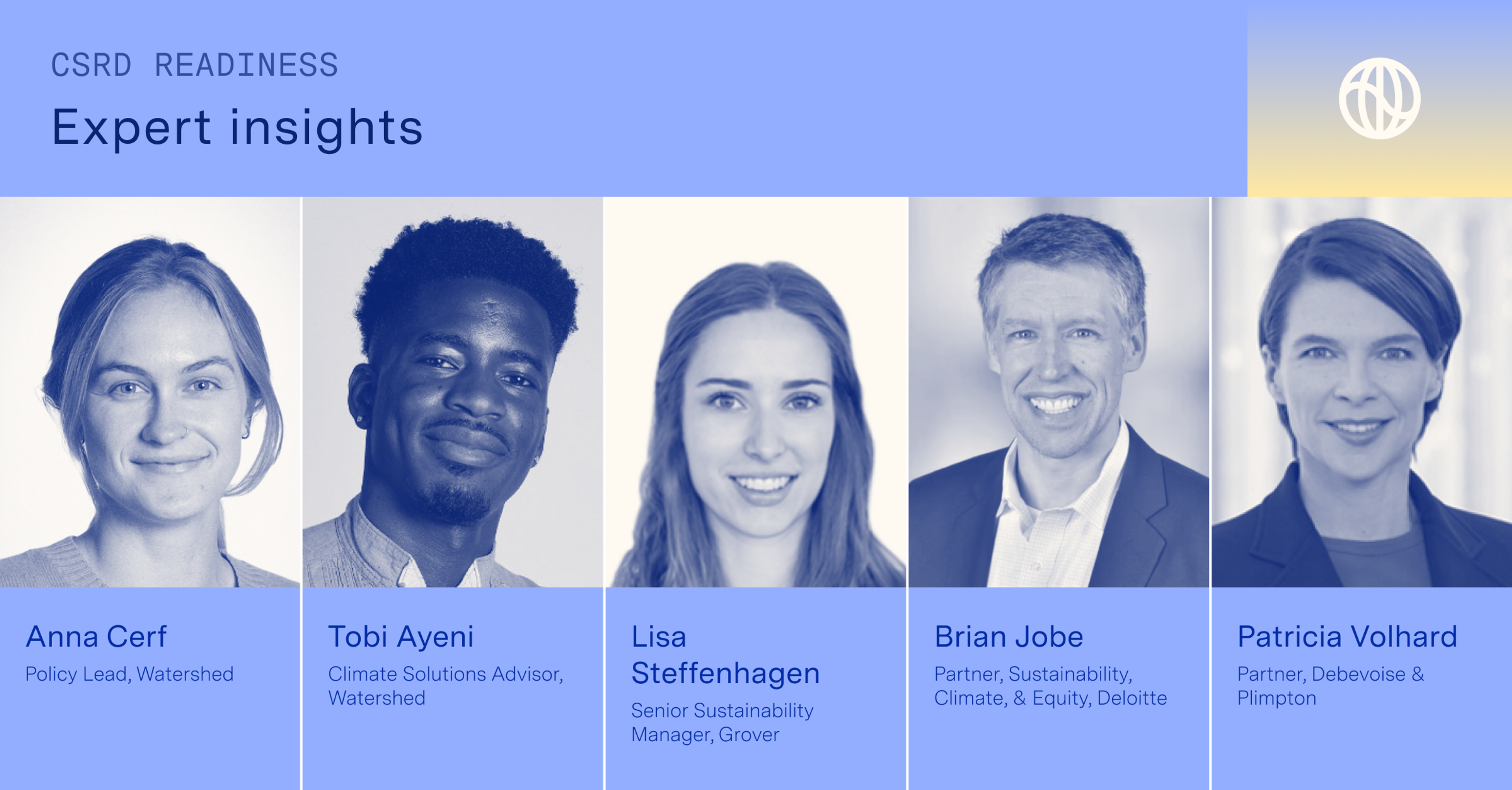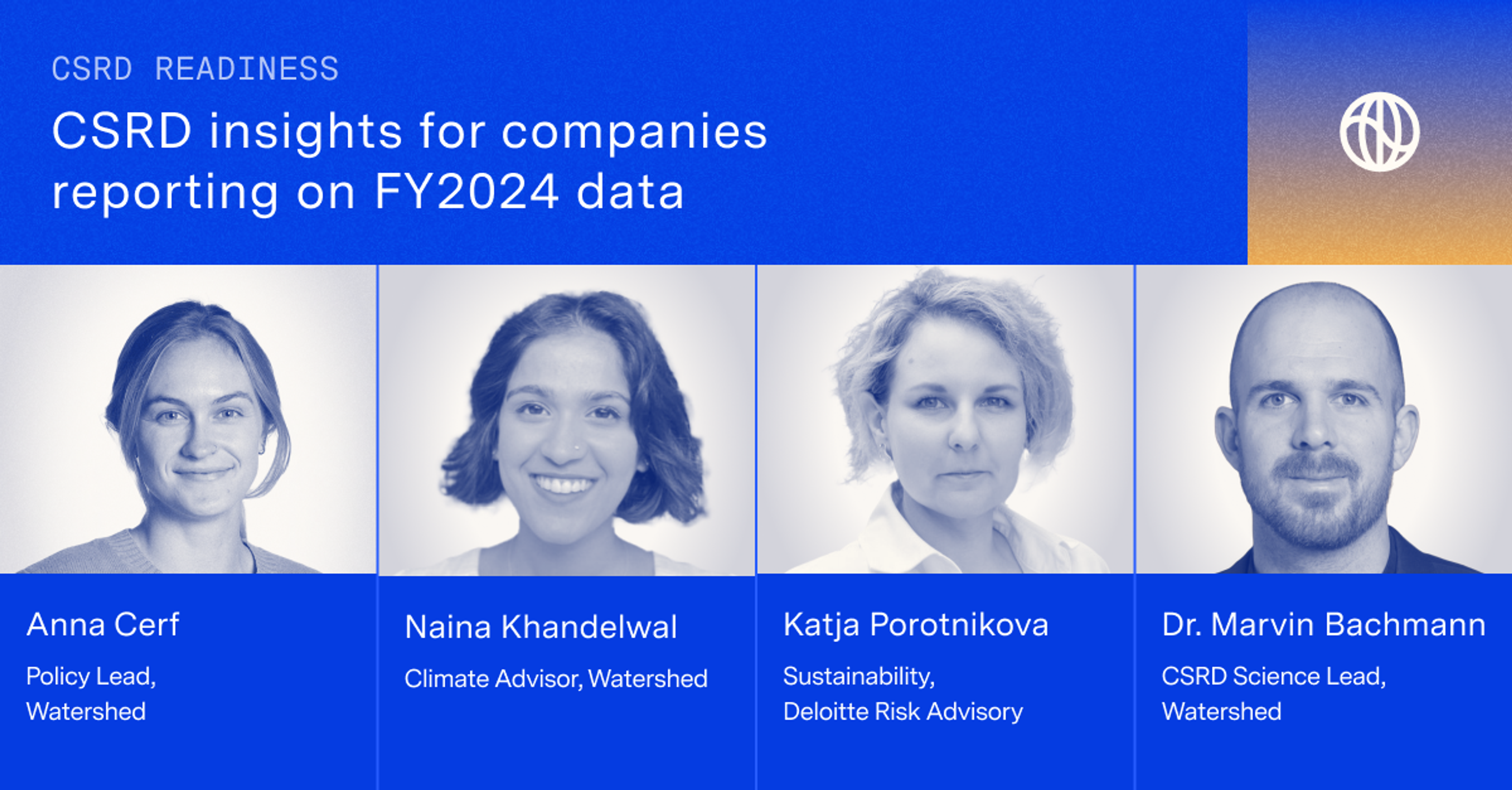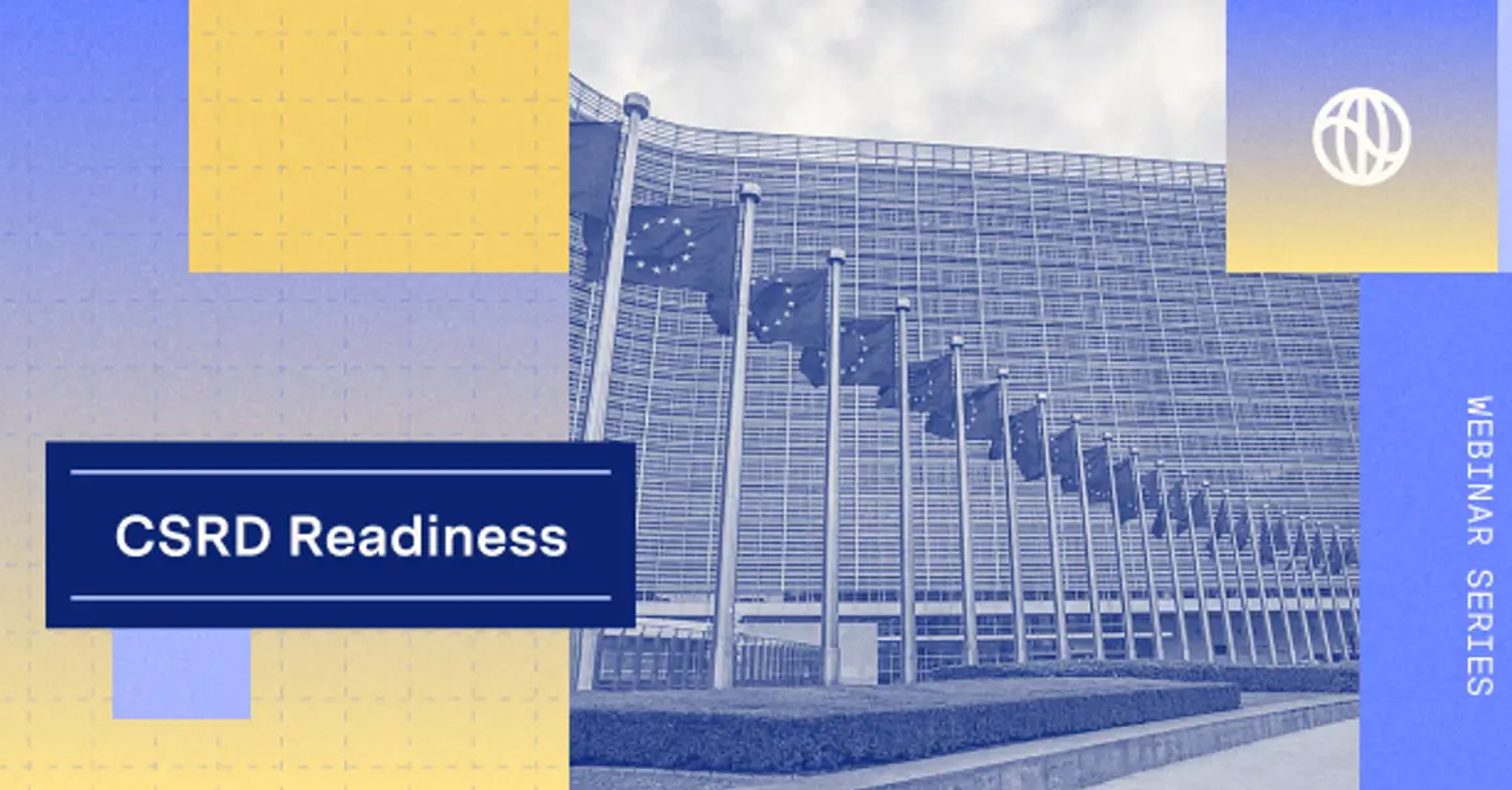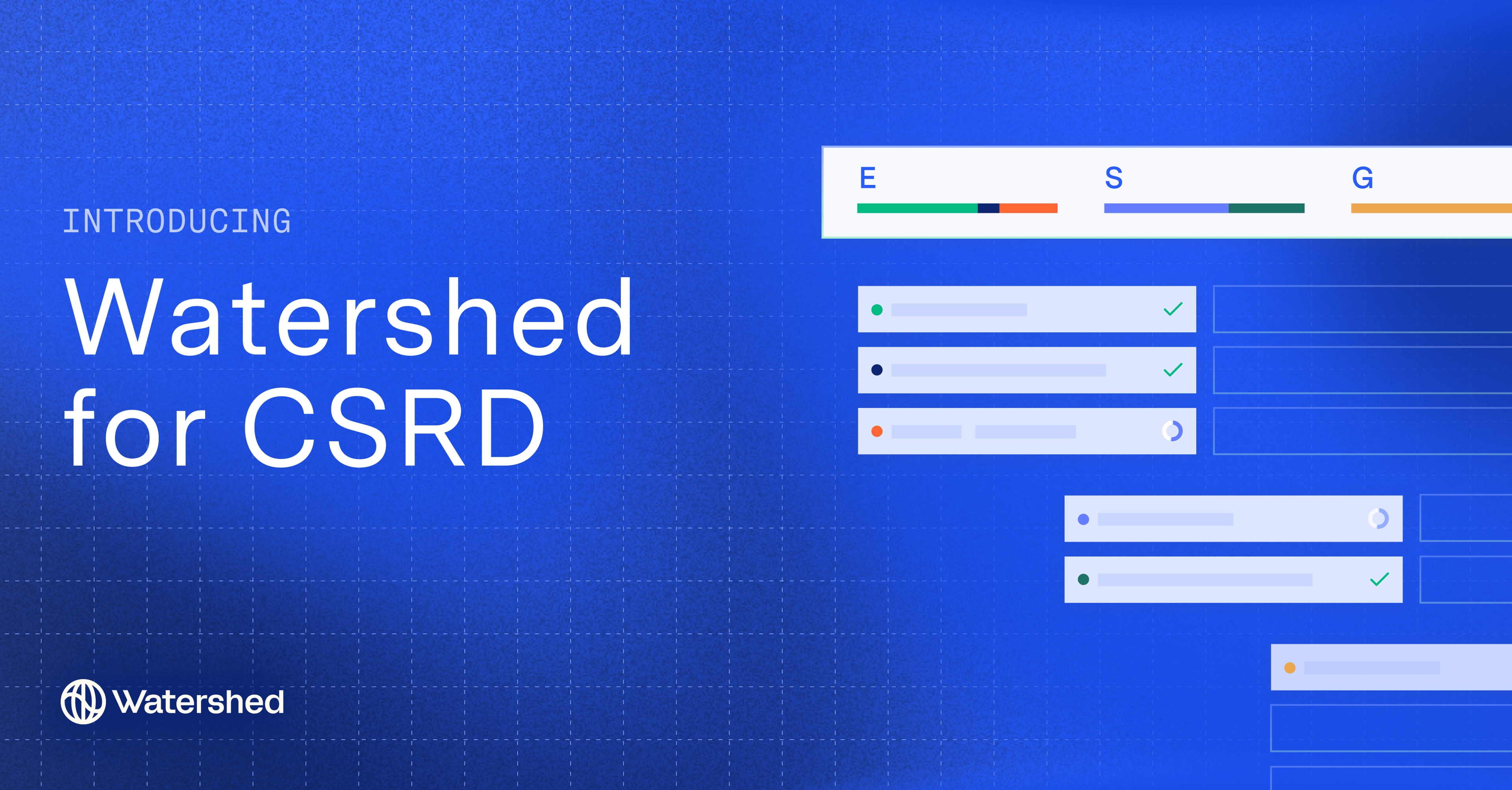The extensive requirements of the EU’s Corporate Sustainability Reporting Directive (CSRD) mean that compliance must be a company-wide effort for every business that’s impacted.
For the person tasked with leading this effort, this means clearly translating CSRD requirements into meaningful action points and securing buy-in on these action points from every stakeholder.
“What is the risk if you don’t do this? Confusion. Confusion will lead to inefficiencies. Confusion will lead to miscommunication. And eventually, this team that you’re trying to build to tackle the CSRD will fail,” says Markus Pretzl, who, as Director of ESG and EHS, is currently leading CSRD efforts at TIP Group, a major European equipment services provider.
Pretzl sat down with Watershed CSRD experts Katie Sidell and Naina Khandelwal to discuss how this works in practice, covering everything from who should be involved, to the best ways to engage different stakeholders (both internal and external) during the CSRD process.
Here are their top tips:
Which team should be responsible for the CSRD report?
Sidell and Khandelwal observed that the two most common teams they see owning the CSRD process are ESG/Sustainability and Finance. Choosing between these depends on the specifics of your company.
Many businesses, including the TIP Group, assign CSRD ownership to the ESG team. For Pretzl, this is a logical choice: “In our case, the ESG team is taking the lead on [the CSRD], because we are capable of translating the ESRS [European Sustainability Reporting Standards] into specific data reporting requirements that are understood internally.”
Given the depth of reporting involved in the CSRD, the finance team may also be a good fit to own the overall report, suggests Sidell. “They already have a relationship with assurance providers and have experience with other mandatory disclosures.”
Additionally, given the serious financial risk of non-compliance fines, some CFOs and Finance teams may feel they’re best placed to manage the process.
“If finance does own the overall CSRD process, they’ll most likely need an ESG specialist working closely with the team to advise on terminology and best practices,” says Sidell. Some companies Sidell has worked with have restructured their organization so sustainability becomes part of the finance team.
CSRD ownership also occasionally sits with legal, data analytics, communications, and even procurement.
How to engage each stakeholder group in CSRD reporting
Regardless of which team is responsible, they’ll have their work cut out for them in building collaboration and alignment across the entire organization. The good news, Pretzl points out, is that the structure of the CSRD process itself “builds a funnel”—guiding the team to onboard internal and external stakeholders into the process step by step.
Pretzl shared some collaboration strategies specific to each group of stakeholders in the CSRD funnel:
1. The leadership team
“If you don‘t get the buy-in of the senior leadership, then you won't be successful in such a cross-functional corporation,” says Pretzl. “Getting executives like CFOs on board can really unlock all these other teams‘ involvement.”
Engage your leadership team by:
- Being blunt. As Pretzl says, “The CSRD is a legal reporting requirement, and the penalty for non-compliance is 5% of your global annual turnover. Complying with the data requirements is a priority.”
- Focusing on the business opportunity. To engage senior management, Pretzl suggests explaining that the CSRD report is not just about climate data. It’s about talking to your investors. “It’s going to be the source of all the ESG data that ratings agencies, the media, investors, customers, and all your stakeholders use to understand your company's impact. And they're going to start comparing you to their peers—and you need to be ready for that.”
2. Data owners
Once you’ve got your leadership team motivated, you need to involve the teams that own the data you’ll be reporting on, such as: HR, Legal, Compliance, Finance, Health and Safety, ESG, and Manufacturing.
Engage your data owners by:
- Translating the wording of the report into relevant terms. “It‘s an incredibly complex piece of legislation,” says Pretzl. “You need to translate it into requirements that are internally understood.”
- Looking for win-win opportunities. In the best-case scenario, the data you have to prepare for the CSRD can also help the data owners themselves. For instance, the TIP Group’s HR team is currently working to close the gender pay gap in their organization. The requirement to disclose gender-based salary data for the CSRD “enables us to have a consistent data set, and also gives us some external visibility, that will support us on this journey to close the gender pay gap in the coming years.”
If possible, Pretzl suggests, “Figure out the pain point of each specific team, and look for how you can connect that pain point to a data reporting requirement.”
3. Data transformers
Once you’ve identified and collected all your data, you’ll need to involve your business intelligence or IT team to prepare the data for the report.
Engage data transformers by:
- Making their lives easier with the right technology. Before the CSRD, TIP Group used a standard ESG reporting tool, but more was needed to handle the diversity and complexity of CSRD data. Pretzl‘s advice is to look for a solution that supports complex data cleaning, preparation, and integration; can help capture both qualitative and quantitative data points; provides full reporting capabilities; and ensures data is audit-ready.
4. Integrated reporting team
Once the data has been collected and transformed, you’ll need to connect with a final group of internal stakeholders—the reporting team. Whether finance, ESG, or communications prepare the final report, you should expect a lot of back-and-forth between all stakeholders as you go through the internal review process.
Engage the reporting team by:
- Acknowledging the changes inherent in the CSRD process. The reporting team handling the CSRD will likely be experiencing some changes. If it’s the finance team, they may not be used to this breadth of reporting, and they may have lost ownership of some aspects of the reporting process. Or, if it’s a new team handling reporting, there may be some feathers ruffled in the team that usually does it, Pretzl points out. He suggests using “a lot of empathy, discussions, and open conversations,” to avoid getting into a turf war over the final report.
5. External stakeholders
The CSRD requires close collaboration with external stakeholders, especially auditors and shareholders.
Engage auditors by:
- Involving them early in the process. For instance, the TIP Group worked early on with their external auditing partners on the DMA and scoping exercises.
- Use test key performance indicators (KPIs) to understand their expectations. At TIP Group, they created sustainability KPIs and linked them to their revolving credit facility early, to get a real sense of how their audit partner would assess the process. Next, they’ll expand the scope of those KPIs and repeat the assessment process.
Engage shareholders by:
- Showcasing the opportunity. While shareholders may feel nervous about the level of disclosure involved in the CSRD, there’s also a great business opportunity. Companies will have access to data that can substantiate their green credentials, a repeatable process for gathering standardized data across the business, as well as insights into the market and their competitors via their peer’s CSRD reports.
- Address specific concerns. If shareholders have already raised sustainability concerns, the transformation plan created as part of the CSRD process will give companies a solid basis to address them.
If you’re in the process of preparing your first CSRD report, Watershed can help. Watershed for CSRD is purpose-built to help companies take control of sprawling data collection in a single, comprehensive platform.
To learn more about how your peers are building their CSRD teams and handling reporting requirements, consider applying to the CSRD Connect community.







